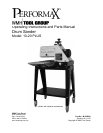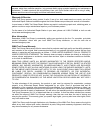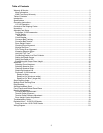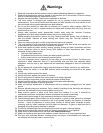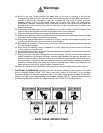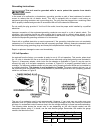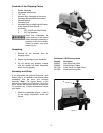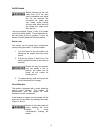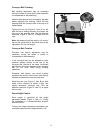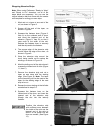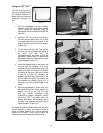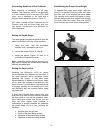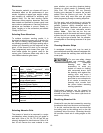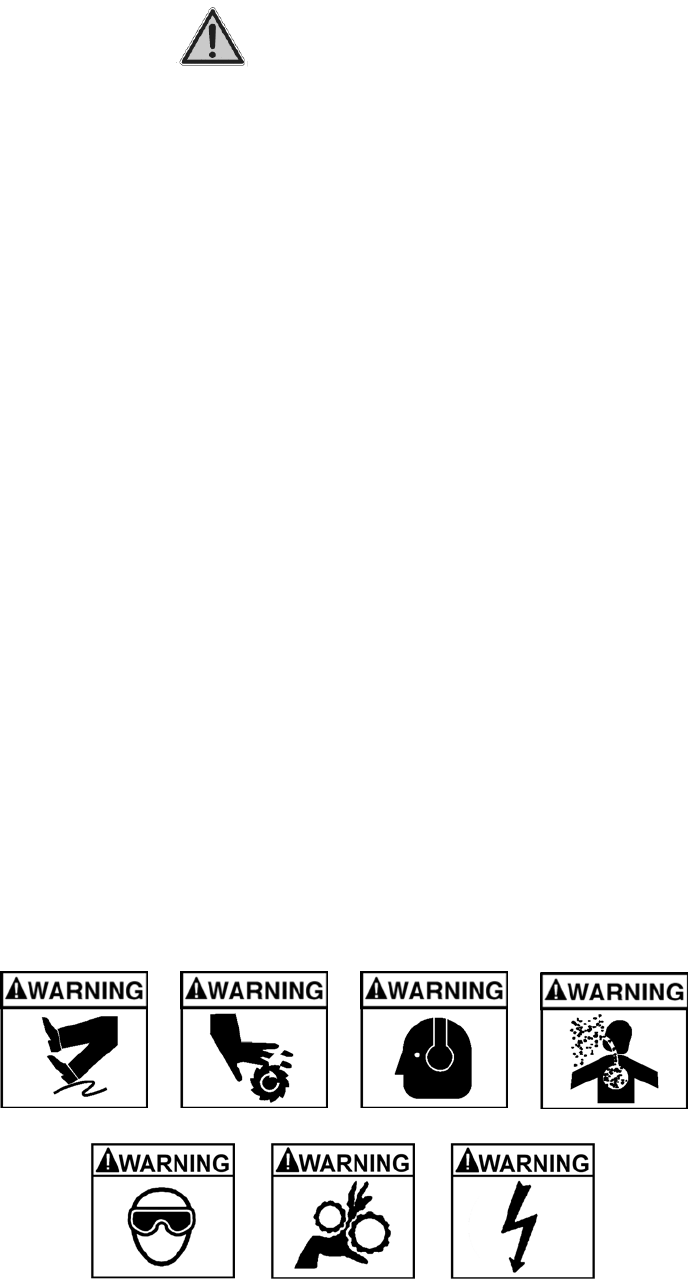
5
29. Stand to one side of the conveyor and make sure no one else is standing in line with the
conveyor while feeding into the machine. The drum sander operates at high speed and should a
part slip, it will exit the machine at a high rate of speed and may result in injuries to anyone
standing directly in front of the infeed. (Keep the conveyor belt clean and check pin-roll
adjustments). Maintain a balanced stance at all times so that you do not fall or lean against the
sanding drum or other moving parts. Do not overreach or use excessive force to perform any
machine operation.
30. Use the right tool. Don’t force a tool or attachment to do a job for which it was not designed. The
right tool will do the job better and safer at the rate for which it was designed.
31. Use recommended accessories; improper accessories may be hazardous.
32. Maintain tools with care. Keep tools sharp and clean for the best and safest performance. Follow
instructions for lubricating and changing accessories.
33. Never brush away sawdust while the machine is running. Use the correct speed and feed for the
tool. Be sure that the tool is the correct one for your operation.
34. Never stand on a machine. Serious injury could occur if the machine tipped or if the sanding drum
is unintentionally contacted.
35. Never leave the machine running unattended. Turn the power off and don’t leave the machine
until it comes to a complete stop.
36. All doors should be closed, all panels replaced and other safety guards should be in place before
the machine is started or operated.
37. Keep your hands clear when feeding parts onto the conveyor. The part will be forced down as it
begins to feed into the machine, causing a pinching action between the part and the table. Use
caution! Hands should be clear of the stock and the table to avoid pinching. Never reach into a
running machine. Turn off the electrical power and stop the machine before attempting to retrieve
parts from within it. Keep your hands away from the sanding area. Contact with internal moving
parts can result in the loss or injury to fingers, hands and arms.
38. Remove loose items and unnecessary work pieces from the area before starting the machine.
• ADDITIONAL INFORMATION regarding the safe and proper operation of this product is available
from the National Safety Council, 1121 Spring Lake Drive, Itasca, IL 60143-3201, in the Accident
Prevention Manual for Industrial Operations and in the safety Data Sheets provided by the NSC.
Please also refer to the American National Standards Institute ANSI 01.1 Safety Requirements for
Woodworking Machinery and the U.S. Department of Labor OSHA 1910.213 Regulations.
- - SAVE THESE INSTRUCTIONS - -
Warnings



